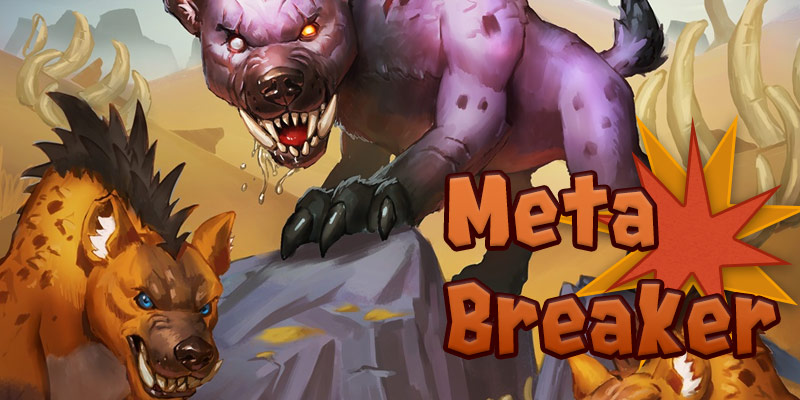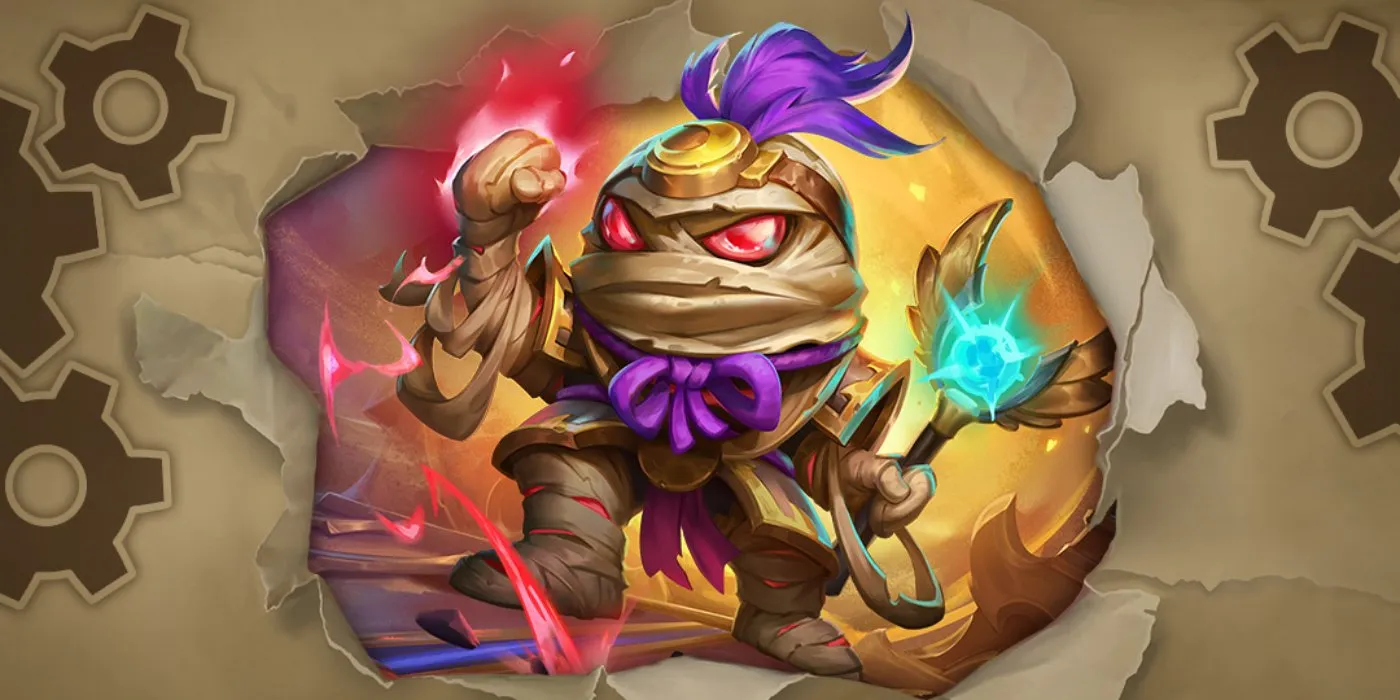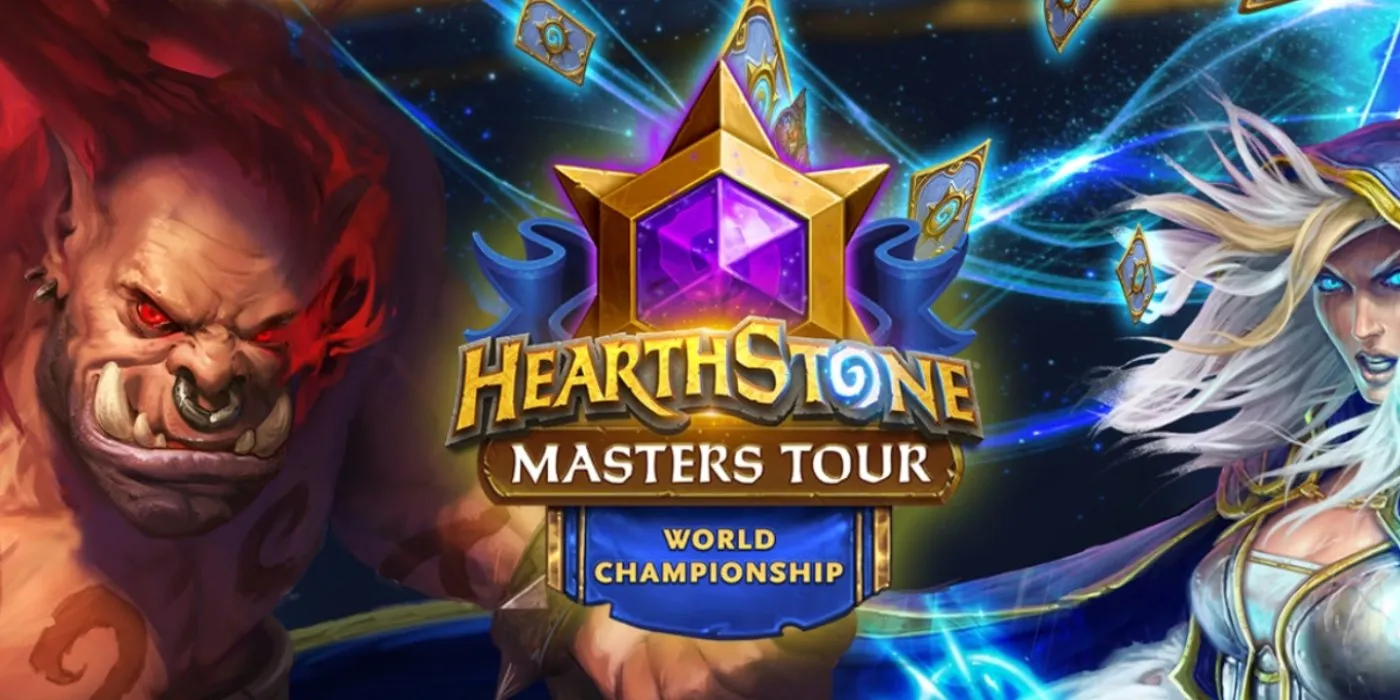Well met!
Welcome to Meta Breaker, a new weekly series where I’ll be covering the process of building decks to attack the meta and climb the ladder. More specifically, each week expect the following.
- Analyzing the current meta and choosing what deck(s) we’d like to target.
- Assessing the strong and weak points of our target(s).
- Identifying cards and strategies that may prove effective against our target(s).
- Building an initial version of our deck and trying it out against the field.
- Continually refining the decklist using observations made from test games.
A quick note: the purpose of this column is not to be an empirical source on “Secret OP” builds. The unfortunate reality of building your own decks is that sometimes there is an established meta deck that already does what you are trying to do, but better. However, sometimes, you strike gold. Even in the age of the internet, an individual’s ability to innovate and refine new decks is a huge asset, and quite frankly one of the things that keeps card games fun. My goal is to provide an enjoyable exploration of the deckbuilding and refining process and help us all improve as Hearthstone players and innovators.
Without further ado, let’s dive in!
The Enemy
So who’s Public Enemy Number One? How do we decide who to focus on? There are two potential approaches to this question, generally:
- The archetype with the highest winrate in our rank bracket.
- The archetype with the highest playrate in our rank bracket.
There’s an argument to be made for each. If you build your deck to do well against the strongest deck in the meta while retaining reasonable matchups across the board, you’ll set yourself up for success on the ladder climb. If your deck is built to beat the most common deck, that will translate to a direct advantage in more of your matches. For today, I’ll be focusing on a strong deck that also has a high playrate at rank one and Legend- Combo Priest. Here’s the version featured in our Standard Meta Report:
So, what are Combo Priest’s strengths and weaknesses? We can guess these pretty well just by looking at the decklist, but I played around 20 games with the deck to get a better feel for how it played. Instead of just listing strengths and weaknesses, I’m going to ask some more pointed questions for a deeper understanding:
How does this deck win?
This deck is all about snowballing the early game. It establishes an early board presence and maintains that presence by buffing and healing up its undercosted minions. It usually finishes the game by bursting you down for about 15-20 damage around turn 5 or 6 using Inner Fire. It has a few tools for refueling- Psychopomp and in this case Bwonsamdi, the Dead- in case it doesn’t run you over right away. You always have to respect the possibility of some massive burst coming out of any minion with 3+ Health.
How does this deck lose?
If you stifle its early game board presence, all the buffs and heals in the Priest’s hand become really hard to utilize effectively. In addition, although the Priest does have some means of card draw, it’s very light on card advantage compared to most other decks in the meta. Although the buffing and healing makes it difficult to take out its minions with damage, their threats are vulnerable to silence and hard removal.
A Winning Recipe
So in summary, here’s our “recipe” for how to beat Combo Priest:
- Shut down their board in the early game
- Use hard removal to remove their key threats
- Neutralize their burst potential (e.g. lots of Taunts)
Brainstorming
Creating a shortlist of objectives for your deck is essential for narrowing your focus and for helping you to come up with solid ideas. As one of my favorite columnists, Mark Rosewater, often writes: “Restrictions breed creativity.” In particular, the last point got me thinking of alternative ways to neutralize Priest’s burst potential- and I realized there was a type of card that fits all three criteria very well: Hunter Secrets!
As is the case with most combo decks, the best way to counter them is to disrupt their game plan directly and, if you can, interact with them on their turn! Let’s think about how some Secrets can mess with Priest’s game plan:
- Snipe acts as early removal and also kills their minion before they have a chance to buff it, which is huge in this matchup.
- Pressure Plate is hard removal, and can kill Priest’s minions on the same turn they attempt to combo you.
- Freezing Trap is another piece of hard removal and makes it impossible for a Priest to combo you if they only have one minion on the board.
In addition to these Secrets making the Priest’s life miserable, just the threat of having a Secret on the board does a lot to disrupt how the Priest plays a turn. Perhaps they can’t attack with that minion which was buff last turn for fear of Freezing Trap, or they’re afraid to buff up their only minion this turn because you already showed Pressure Plate.
Now we’ve got our starting point for the deck:
To build our core, let’s look for cards that are essential and have great synergy with the cards we’ve already included. Since Secret Hunter is already an established archetype, we already have a pretty good idea which cards to include.
- 2 Eaglehorn Bow - Should pretty much always be run in any deck with 6+ secrets.
- 2 Hyena Alpha - See above.
- 1 Subject 9 - Will draw at least three cards with our current build, and potentially more if we include more Secrets.
Since we include Subject 9, it’s a good idea to include a couple more Secrets to round out our synergies:
- 1 Rat Trap - a nice singleton for this meta. It’s also nice that Priest will trigger it fairly easily.
- 1 Misdirection - I considered Explosive Trap, but Misdirection serves a similar role against aggro decks and is also great insurance against Inner Fire.
Now that we have a core for our deck, it’s time to ask an essential question:
How does this deck win?
Although our deck’s not complete yet, it’s important to have this goal in mind, so we know how to flesh it out. In general, Secret Hunter’s goal is to disrupt the early game with Secrets, establish a board presence in the midgame, and close out the game with face damage. For this gameplan, we want our mana curve to crest around the 2-3 mana slot.
Early game disruption
Although Secrets go a long way, we’d like more ways to neutralize early boards. We’ll do this using a combination of cheap minions and hard removal:
Establishing a mid-game board
Hyena and Eaglehorn do this very well already, but here are a couple more to help this gameplan:
- 2 Animal Companion
- 2 Unleash the Beast
- 1 Zul'jin- Should be run in most decks with Unleash, and also lets us replay a bunch of Secrets.
Closing out the game
- 2 Kill Command (We’ve already got plenty of Beasts)
- 2 Master's Call - At this point, I noticed that we are in fact playing entirely Beasts, which means this sweet card draw spell can slot right in and give us some extra late game gas to close out the game.
- 2 Lifedrinker - Now that we’ve got Master’s Call, drawing a couple of these can provide some much-needed extra burst damage. It’s pretty solid on its own too, the drain helping when you’re racing an aggro deck.
Let’s see what the whole deck looks like:
Are we done?
The biggest part of the deckbuilding process is often overlooked- it’s the refining process! Playing the deck and evaluating the cards in-game is key to making your deck better and more competitive. Some key questions to ask yourself:
- How often is this card “online?” If you find yourself constantly struggling to, for instance, trigger your Hyena Alpha, that’s a pretty clear indicator your deck might want more Secrets.
- How close is this situation to the usual? Certain cards often shine brightly in the perfect situation but end up being almost useless in many others. Consider the card’s performance in the average case and whether that warrants its inclusion in your deck.
- What card do I wish I had here? Keep a list of cards that you considered for the deck but didn’t end up including. If you often find yourself saying “Ah, I wish I had __” that’s a good indicator that you might want it in the list. Who needs Zephrys when you can see the future and put that perfect card in yourself? (5Head)
- I drew this again? If you often find yourself sighing when you draw a card - especially when the situation is near ideal for the card itself- that’s a good sign the card should not be in your deck, or should at least be decreased to one copy.
In my own testing of this deck, I played around 30 games on the ranked ladder and recorded some observations to myself. I didn’t keep notes on every card, just the ones that stuck out to me over many games. A few examples:
- Master's Call is amazing. I just burned a Mage out by playing Master's Call into two Lifedrinkers and won!
- Master's Call feels underwhelming- I got stuck with two in my hand against aggro and died after playing only one. Maybe put it to one copy?
- Paladin matchup feels tough- can we fit in a Silence effect?
- Warrior also feels tough, seems like the deck needs a little more staying power.
- Priest matchup going very well- found myself wishing for Deadly Shot quite a lot, though.
Ch-Ch-Ch-Changes
Now that we’ve spent some time testing and evaluating our deck, we can use our notes to decide what direction we want to go. I’m going to leave off with some potential directions you could go with this deck:
- -1 Master's Call, -1 Misdirection, +1 Explosive Trap, +1 Ironbeak Owl: Improving the Quest Paladin matchup.
- -2 Master's Call, -1 Lifedrinker, -1 Misdirection, +2 Masked Contender, +1 Secret Plan, +1 Ramkahen Wildtamer: Go more all-in on the Secret synergies and make the deck even more disruptive. Ramkahen is nice for getting extra Hyenas.
- -1 Misdirection, -2 Lifedrinker, +2 Wild Bloodstinger, +1 Dire Frenzy: This build is a bit spicier and has a lot more late-game staying power versus something like Warrior. Worth testing, although I suspect it’s more meme status.
That's all for this week! What decks have you been building to counter the ladder? Do you have any good tips for aspiring deckbuilders? Let us know in the comments and see you next time.




Comments
Re: Wild decks - I don't think the Wild meta is all that unstable, at least at high ranks. I picked up Legend last season with Mecha'thun Warlock and am doing so again this season - it's actually surprisingly well positioned against what is honestly a fairly predictable meta now. The vast majority of games are going to be Secret Mage, Even Shaman, Renolock, Snip-Snap Warlock or some form of aggressive paladin - you'll meet other matchups in maybe 20% of your games at most.
Re: Article deck - I'm honestly quite surprised to hear that combo priest has a high playrate. I only saw it occasionally during my Legend climb last season, though I will say I haven't played much Standard in the past few weeks.
If the deck is specifically targeting priest, though, I'd suggest a couple of changes. I realise that the deck is going to run dry quickly, but all the same I'm sceptical as to the build-around of Master's Call; its inclusion means you lose access to some very potent cards for the archetype, most notably Masked Contender, which is invaluable for the oppressive Secret Hunter curve (Secret-Contender-Hyena is pretty brutal in most matchups). Hunter's Pack works well as an alternative hand refill, particularly as the majority of Hunter secrets work well into Priest.
If you're targeting priest then I'd drop the Lifedrinkers altogether and instead lean towards Ironbeak Owl (assuming you stick with the Master's Call build, if not then Spellbreaker is preferable). You want at least one Deadly Shot, probably instead of a Kill Command, since it's pretty much perfect against current Priest builds - it can either snipe a big minion, or else help to isolate a buffed minion to play into a Freezing Trap setup. It also makes Zul'jin more of an out.
Explosive Trap is probably superior to Misdirection as a single secret tech - you play it to counter Lightwardens specifically and avoid playing it out otherwise due to Cleric shenanigans.
Finally, I'm pretty unconvinced by the double Shimmerfly. The card is barely worth playing in Highlander Hunter, and you have a lot more slots to fill in that deck. I would instead suggest Venomizer if you're going full anti-priest - current priest is basically forced into Pyromancer plays and otherwise has absolutely no way of answering it outside of an awkward Silence.
A lot of good suggestions! The changes you suggested all sound very reasonable. I appreciate you taking the time and thought to leave your comment, and acknowledge that I'm not a perfect deckbuilder. As is the case with brainstorming, a lot of my first ideas will turn out to be not so great. I do believe in the power of continual revision in deckbuilding and think there is always room for improvement, just like with a piece of writing, so I really appreciate your constructive criticism. If I get a chance I'll try out your suggested changes (although I'm currently working on this week's article hehe). I sincerely hope you leave a comment with a similar level of criticism on my next piece when it comes out! :)
Also regarding the playrate of Combo Priest- it's kinda hard to judge because different websites will show different numbers with the data they each have available. Personally I felt that I encountered it reasonably often and that it's one of, if not the best, decks in the current meta, which is why I decided to focus on it for last week's article!
Was a great read! Thanks for the clear effort you put into this.
Great article! Loved that you took us through your process of building a deck for meta-breaking!
Great article, even noob can understand everything clearly.
Such a well written (and interesting) article! Excellent work, keep it coming.
Great article, well-done!
Another great series that I am looking forward to read more from. Keep it up @FearGralex
This is an amazing article. I look forward to reading this when N'Zoth, Rag and friends are back.
Out of Cards just keeps getting better!
Great article.
Yet an other promising post series ; Keep it up OoC's Team

If you could play this Beast/Secret Hunter in Wild, how would you change/ build this deck?
Yeah, as the previous poster said, the Wild meta is pretty crazy right now and I must admit I'm not too familiar with it as of late. I also think that in Wild, running Master's Call might not be worth the cost of missing out on cards like Mad Scientist. That said, I think if I were to play a version of this deck in Wild keeping Master's Call, some cards I'd look to fit in from older sets might be Haunted Creeper, Wandering Monster, Cat Trick, Lesser Emerald Spellstone, Deathstalker Rexxar, Quick Shot, and perhaps Call of the Wild. What you cut depends on what decks you might be facing but I'd probably start with Misdirection, 1 or both Lifedrinkers, and maybe a Hunter's Mark.
That's a hard one, mainly because the wild meta us so unable; the secret mage is the only powerhouse so far
Deckbuilding articles are always fun to read, and incredibly insightful. Great job!
So glad you enjoyed! :)
Stats like win-rates would be helpful too.
That’s a good point! I’ll do some more stats-tracking for next week’s article :)